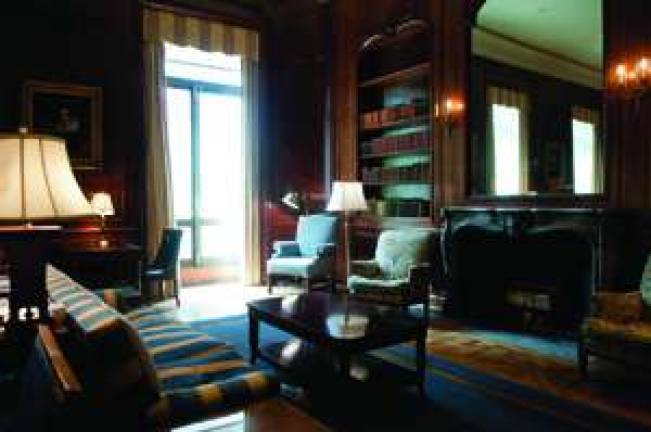Where Writers and Readers Live

By Amanda Woods Beyond the winding staircases and old-fashioned elevators in the Upper East Side's New York Society Library, countless stacks of books, ranging from historical accounts to mysteries to rare titles, have enticed authors, researchers and ordinary readers for 75 years. The library, a converted townhouse, opened on East 79th Street near Madison Avenue in 1937. Founded in 1754, in its original location at City Hall, where it once housed the Library of Congress, it is the oldest cultural institution in the city. George Washington once frequented the library, and writer Herman Melville came a century later to take out books on whaling. The member base has remained relatively steady over the years, according to Sara Holliday, the library's events coordinator and head librarian's assistant, and the library continues to attract people who "want to read for fun but also for edification," she said. The library's stacks hold 300,000 volumes. Holliday said some people who visit the library, even longtime Upper East Siders who venture in for the first time, aren't anticipating what they see. "People come in and don't expect the whole thing," Holliday said. "One of the craziest things about us is that when we were founded, the word society meant 'open to everybody.' It's the complete opposite of what it means today. To say 'the society something' was identical to saying 'the public something.' Today, 'society' suggests it's exclusive and it's only for the wealthy ? and we're not like that at all." The library is open to members and non-members alike, but only members are permitted to take out books. Member families pay a $250 yearly fee. Non-members are encouraged to browse the stacks and read in the library's reading rooms, Holliday said. In one reading room with polished wooden walls, a teal-colored rug, a coffee table with a small pile of books, and lamps placed throughout, a few visitors sat quietly, engrossed in newspapers and magazines. Six private writing rooms are also available on the library's fifth floor-and many writers have taken advantage of them for quiet space to work on their books. "The Society Library has almost enforced silence, and I like that," said Adrienne Ingrum, a book editor. "There are so few places in our society now where there is quiet, and where quiet is celebrated and respected. It's such a good place to go and sit." Betsy Carter, the author of The Puzzle King, among other titles, has also found a personal sanctuary at the New York Society Library. "Working at home is very distracting," Carter said. "I had to work at a place where I couldn't act my worst, and it's such a wonderful place for a writer, because it's quiet, and once you're in there, it's you and [that's] it." Maggie Jackson, another member, said the library offers her the separation from the fast-paced technological world she wrote about in her book, Distracted: The Erosion of Attention and the Coming Dark Age. "Just about everything I do as a writer, I do there. It's removed from the hustle and bustle," Jackson said. The library displays a rotating exhibition in honor of famous authors. Currently, an exhibit called "Edith Wharton's New York City: A Backward Glance," which includes family portraits and books that Wharton, a New York City-born Pulitzer Prize-winning author, read as a child-is on display. There is also a Children's Library floor, which holds between 10,000 and 20,000 volumes, Holliday said. The library offers special events for children and young adults, which are only open to members. Also housed in the library are special collections, including the DaPonte collection-named after Lorenzo DaPonte, who wrote the text accompanying Mozart's Marriage of Figaro, Don Giovanni and Cosi Fan Tutte-and the Hammond Collection, an assortment of gothic novels. Readers can also explore rare books in a locked, climate-controlled stack inside the library, but they are not allowed to borrow these books. "It's wonderful, and you wouldn't want to keep it a secret," said Sidney Stark, another library member. "You have the sense that there are writers from the past still inside there in those walls with you."